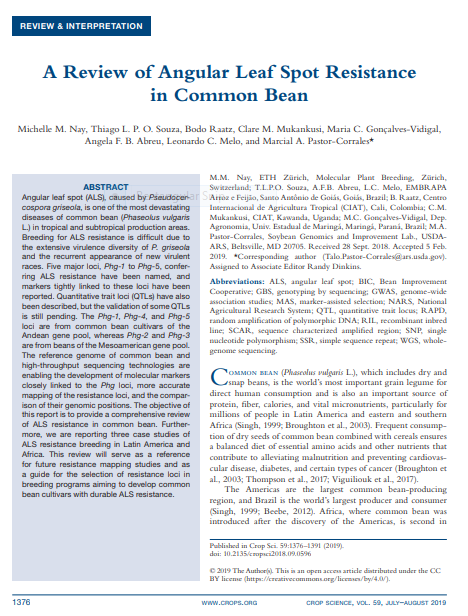A review of angular leaf spot resistance in common bean
Summary
Angular leaf spot (ALS), caused by Pseudocercospora griseola, is one of the most devastating diseases of common bean (Phaseolus vulgaris L.) in tropical and subtropical production areas. Breeding for ALS resistance is difficult due to the extensive virulence diversity of P. griseola and the recurrent appearance of new virulent races. Five major loci, Phg‐1 to Phg‐5, conferring ALS resistance have been named, and markers tightly linked to these loci have been reported. Quantitative trait loci (QTLs) have also been described, but the validation of some QTLs is still pending. The Phg‐1, Phg‐4, and Phg‐5 loci are from common bean cultivars of the Andean gene pool, whereas Phg‐2 and Phg‐3 are from beans of the Mesoamerican gene pool. The reference genome of common bean and high-throughput sequencing technologies are enabling the development of molecular markers closely linked to the Phg loci, more accurate mapping of the resistance loci, and the comparison of their genomic positions. The objective of this report is to provide a comprehensive review of ALS resistance in common bean. Furthermore, we are reporting three case studies of ALS resistance breeding in Latin America and Africa. This review will serve as a reference for future resistance mapping studies and as a guide for the selection of resistance loci in breeding programs aiming to develop common bean cultivars with durable ALS resistance.
Open resource Download resource Access resource on external site

